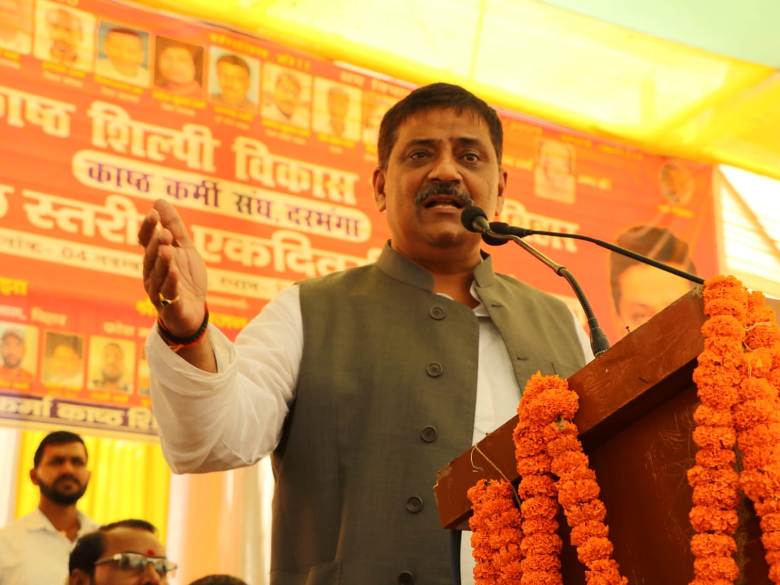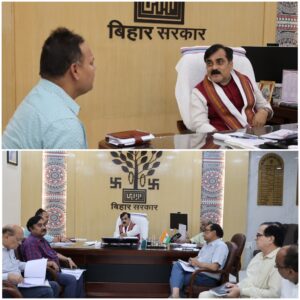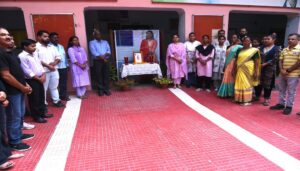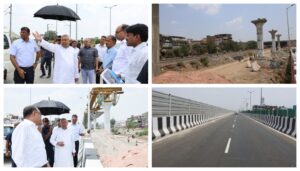Comprehensive safety assessment of Kosi and Gandak Barrage will be done: Minister Sanjay Jha

Patna: In a bid to bolster flood protection in the state, the Bihar government is implementing a slew of measures, including a comprehensive dam safety assessment, and the rehabilitation of key structures such as the Kosi Barrage, Birpur, and Gandak Barrage, Valmikinagar. These initiatives are part of the ‘Bihar Integrated Water Resources Management Project,’ supported by the World Bank. Sanjay Kumar Jha, the Water Resources and Information and Public Relations Minister disclosed these plans in response to a question in the Bihar Legislative Council on Thursday.
Jha emphasized the significance of Kosi Barrage, Birpur, and Gandak Barrage, Valmikinagar in flood protection and irrigation, both of which play crucial roles in the state’s water management system. Kosi Barrage, Birpur, was constructed in 1963, while Gandak Barrage, Valmikinagar, was completed in 1968, and both continue to play integral roles in the region’s flood mitigation and irrigation capabilities.
The minister further elaborated that in 2008, recommendations from key institutions like the Central Water Commission in New Delhi, the Central Water and Power Research Institute in Pune, and the Ganga Flood Control Commission in Patna led to vital protective work being carried out on Kosi Barrage. Additionally, in the financial year 2019-20, efforts to remove siltation in upstream of Gandak Barrage, Valmikinagar, were undertaken.
Despite a record water discharge of 4,62,345 cusecs in the Kosi River at Birpur Barrage on August 14, 2023, which marked the highest in 34 years during the flood season, the barrage and embankments stood strong, averting devastation. Jha attributed this success to the Water Resources Department’s proactive measures and 24-hour high alert system during the monsoon season.
He emphasized that managing the annual floods from rivers originating in Nepal is a top priority for Chief Minister Nitish Kumar. To address this issue, the Water Resources Department has implemented ambitious schemes and employed modern water management techniques. Innovations such as steel sheet piling, advanced early warning systems, Mathematical Modeling Centers, and Physical Modeling Centers underscore the department’s forward-thinking approach to flood management.
Furthermore, in alignment with the CM’s vision of interlinking rivers within the state, the government has initiated several transformative projects aimed at reducing flood impact and enhancing irrigation capacities across vast areas, the Minister said.
Jha noted that the construction of a High Dam in Nepal is essential for a lasting solution to the recurring floods in North Bihar. “A joint committee of India and Nepal was formed in 2004 to prepare a Detailed Project Report (DPR) for this purpose. However, despite nearly two decades, the DPR remains pending. This international matter calls for collaboration between the governments of India and Nepal, and the Bihar government is actively working to advance progress in this direction,” he said.





